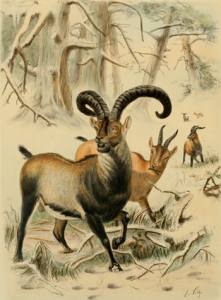Cloning vs. conservation

Suppose you knew the rain forests would be totally destroyed in 20 years, no matter what. But you also knew that if you took certain steps now, some future technology could miraculously reconstruct every living thing in the forests on demand. Would you then be willing to take those steps and pave over the forests tomorrow in the name of faster human progress?
Recently, an economist publicly floated a version of that proposal, hypothesizing that cloning might offer a technological solution to environmental crises. It's an idea that I imagine could sound ingeniously appealing to certain people with some overly optimistic views about the environment or technology (paging Bjorn Lomborg and Ray Kurzweil!). And perhaps it's one that deserves some real consideration -- though probably not for quite the reasons its author had in mind.
Casey B. Mulligan, an economics professor at the University of Chicago, raised the idea in "Species Protection and Technology," a post on The New York Times Economix blog. He acknowledged the protection of biodiversity as a "legitimate goal for public policy," but noted that the costs of saving species often fall on landowners and businesses, and that preventing all extinctions is impossible. Scientific efforts to resurrect mammoths and other extinct species through cloning technology point toward a cheaper solution, he suggested: we could stockpile the DNA of imperiled species now, then bring them back someday, if so desired, à la Jurassic Park.
He wrote:
The fact is that species go extinct all of the time, while we incur real economic costs protecting others. By bringing cloning into the set of public policy instruments, we can protect more species, reduce economic costs of protection, or both.
Bad copies of priceless originals
My first reaction to this brave plan -- unfairly, I admit -- was that when it comes to the environment, economists too often meet Oscar Wilde's description of a cynic: one who "knows the price of everything and the value of nothing." Species and wildlife, like people and unlike money, aren't meaningfully fungible. One can replace them approximately but not exactly. If you burned down an economist's home and replaced it with another one full of somebody else's keepsakes and a perfectly nice new family, I doubt he would find it acceptable. So the promise of a potential to recreate wildlife is at best a questionable bargain.

But returning to the merits of Mulligan's proposal, remember that resurrecting dead or endangered species from their DNA is still a largely a speculative proposition. Russian and Japanese scientists announced early in December that they hoped to clone a mammoth within five years, but the degraded state of most of the recovered, glacially frozen cells sharply lower their odds of success. Pilot projects have cloned a small handful of endangered species, such as the Asian gaur in 2001, but often with limited success. In 2009 Spanish biologists cloned the calf of an extinct subspecies of Pyrenean ibex from tissue samples preserved for that purpose, but minutes after its birth the calf died of lung abnormalities (which have been common among cloned animals to date).
Moreover, all those cloning efforts crucially relied on the use of egg cells or surrogate mothers from living species closely related to the ones being brought back. Rapid, widespread extinction might close off that option in many cases.
Even if one assumes that future advances in biotechnology can overrule all those objections, however, problems remain because species are not merely the sum of their DNA. Many animal species learn essential survival behaviors from their parents, for example. Bereft of good role models and the ecological interactions they would have had naturally, organisms cloned back from the dead will be only a shadow of their ancestors.
It goes without saying that Mulligan's idea also ignores the actual services that various ecosystems render to us humans: refreshing the air, cleaning water, reducing pests, and so on. Frozen samples of DNA provide none of that.
Seize 'em and freeze 'em
Mulligan's column reminded me of a variation on this cloning idea years from almost 20 years ago. Back in 1992, physicist and author Gregory Benford of the University of California, Irvine, published "Saving the 'library of life'" in Proceedings of the National Academy of Sciences. "In the spirit of a thought experiment," he wrote, scientists should consider embarking on an extensive program of documenting, sampling, and freezing every type of life to be found in swaths of rainforest, from the soil to the canopy tops, and in other endangered habitats, such as coral reefs and ocean islands. With local people trained to do the footwork, Benford estimated that sampling for a million square kilometers of terrain would cost about a billion dollars, with another billion for preserving the samples for a century. He likened the operation to saving texts from the burning Library of Alexandria:
This would more nearly resemble an emergency salvaging operation than an inventory, for there would be minimal attention paid to studying the sample.
But Benford recognized in his paper that this preservation strategy -- I liked to think of it as a "seize 'em and freeze 'em" approach -- was primarily a way to preserve the "genome heritage" of vanishing ecosystems, not the biodiversity itself. He also argued that saving the DNA should be a complement to traditional conservation efforts that might not always work, because we would need information inherent in the living systems.
This drastic proposal does not address many legitimate reasons for preserving ecospheres intact, and it should not be seen as opposing them. Indeed, only by preserving in vivo a wide cross section of biota can we plausibly use much of the genetic library frozen in vitro.
...
Some will see in this idea a slippery slope: to undertake salvaging operations weakens arguments for biodiversity preservation. To avoid this, the two parallel programs of preservation and freezing must be kept clear.
In fact, on a smaller scale and with less comprehensiveness, programs have been trying to back up traditional conservation with cryonics for decades. Since 1976, the Frozen Zoo at the San Diego Zoo Institute for Conservation Research has collected cell specimens form more than 800 animal species and subspecies. The Frozen Ark Project, established by the Zoological Society of London, the Natural History Museum and University of Nottingham, is a consortium of 18 institutions from around the world with similar aims. The Kew Millennium Seed Bank Partnership is doing much the same, with a goal of saving 25 percent of all wild plants by 2020.
Should we eat the babies?
The problem is that biodiversity and species-rich wild habitats are fast disappearing. Conservation cannot keep up. And those facts are not about to change, given the humanitarian pressures to encourage economic development globally, the unwillingness of currently rich nations to halt their own growth, and the march of planetary climate change.
Maybe the way to think about Mulligan's idea is like satirist Jonathan Swift's "A Modest Proposal" from 1729, in which he suggested buying and eating babies to alleviate miserable Irish poverty. The satire worked because as outrageous as the idea of cannibalism was, the piece goaded readers to ponder what better solutions they were willing to embrace.
Pushing future cloning technology instead of conservation is a terrible idea. Cryonics and cloning represent, at best, a last-ditch measure for saving traces of nature before it is gone. But if they aren't enough, what unthinkable, unavoidable alternatives -- modest or otherwise -- are we prepared to offer?
•
Image credit: Adam.J.W.C., via Wikimedia
This post was originally published on Smartplanet.com
